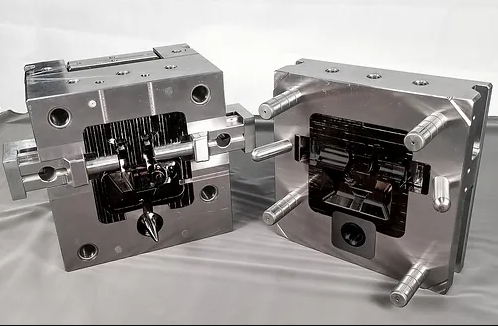Magnesium die casting is a process that involves injecting molten magnesium into a mold to create complex shapes and designs. It is a versatile manufacturing technique that offers numerous advantages over other types of casting methods. In this article, we will explore the versatility and advantages of magnesium die casting.
One of the key advantages of magnesium die casting is its lightweight nature. Magnesium is the lightest structural metal, weighing approximately one-third less than aluminum and one-fifth less than steel. This makes it an excellent choice for industries where weight reduction is critical, such as aerospace, automotive, and electronics. By using magnesium die casting, manufacturers can produce components that are not only strong and durable but also lightweight, leading to improved fuel efficiency and performance.
Furthermore, magnesium die casting offers exceptional dimensional accuracy and stability. The high fluidity of molten magnesium allows it to fill even the most intricate molds with ease, resulting in precise and detailed finished products. This level of accuracy is crucial in industries where tight tolerances and strict specifications are required, such as medical devices and telecommunications equipment. With magnesium die casting, manufacturers can consistently produce components that meet the most demanding requirements.
Another advantage of magnesium die casting is its excellent thermal conductivity. Magnesium has one of the highest thermal conductivity values among all metals, allowing heat to dissipate quickly. This makes it an ideal material for components that require efficient heat transfer, such as heat sinks and electronic enclosures. By utilizing magnesium die casting, manufacturers can ensure that their products remain cool and perform optimally, even under high heat conditions.
In addition, magnesium die casting offers excellent corrosion resistance. Magnesium has a natural ability to form a protective oxide layer when exposed to air, which helps prevent rust and corrosion. This makes it suitable for applications where components will be exposed to harsh environments, such as marine and outdoor equipment. By using magnesium die casting, manufacturers can ensure that their products have a long lifespan and require minimal maintenance.
Furthermore, magnesium die casting is a highly cost-effective manufacturing process. Magnesium is abundant in nature and readily available, making it less expensive compared to other metals such as aluminum and titanium. Additionally, the low melting point of magnesium reduces energy consumption during the casting process, resulting in lower production costs. The ability to produce complex shapes and designs with minimal post-processing also eliminates the need for additional machining and reduces overall production time, further reducing costs.

Magnesium die casting also offers environmental benefits. Magnesium is a fully recyclable material, and the die casting process generates minimal waste. The leftover magnesium scrap can be easily collected and reused, reducing the environmental impact. Additionally, the lightweight nature of magnesium components contributes to fuel efficiency, reducing greenhouse gas emissions in transportation applications.
In conclusion, magnesium die casting is a versatile and advantageous manufacturing technique. Its lightweight nature, dimensional accuracy, thermal conductivity, corrosion resistance, cost-effectiveness, and environmental benefits make it an excellent choice for various industries. Whether it is for aerospace, automotive, electronics, or any other application, magnesium die casting offers numerous advantages that cannot be ignored. As technology continues to advance, the demand for magnesium die casting is expected to grow, further establishing its position as a leading manufacturing method.
-

- Bicycle Freehub 12/14/16 Inch Children Bike Low Rider Bikes Մագնեզիումի ալյումինե խառնուրդ Մանկական հեծանիվ 3-8 տարեկան Պահեստում
-

- Էլեկտրոնային հեծանիվների համար մագնեզիումի համաձուլվածքի ձուլման մասեր և բաղադրիչներ
-

- OEM բարձր ճնշման ձուլման մագնեզիումի համաձուլվածքի շրջանակ հեծանիվների համար
-

- Ավտոպահեստամասերի փոխանցման տուփ մագնեզիումի համաձուլվածքից
-

- OEM ձուլման ծառայության մետաղական բաղադրիչներ Macbook-ի միջինից
-

- Մագնեզիումի համաձուլվածքի տիքսոմոլդինգի բաղադրիչներ

 0086-750-5616188
0086-750-5616188 +86 13392089688
+86 13392089688 sales@zhongmei-tech.com
sales@zhongmei-tech.com







